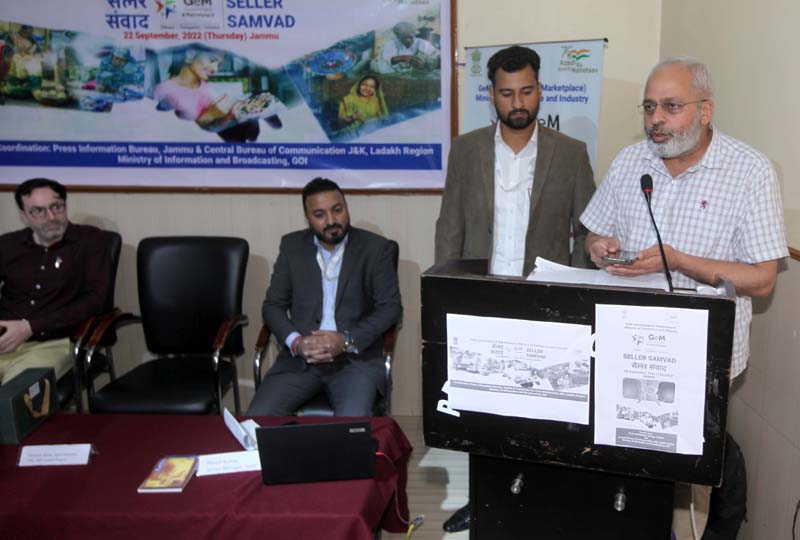
Excelsior Correspondent
JAMMU, Sept 22: Government e-Marketplace (GeM), Union Ministry of Commerce and Industry, today organized a ‘Seller Samvad’ at Jammu in coordination with Press Information Bureau (PIB) Jammu and Central Bureau of Communication (CBC) J&K.
The programme was organized with the aim to interact with the GeM sellers, share their best experiences for learning, inspiring others and make them aware about the new GeM features and functionalities that further make it conducive for them to operate on the portal.
Speaking on the occasion, Joint Director CBC, J&K and Ladakh Region, Ghulam Abbas said that such face to face interactions between the GeM officials and sellers is the need of the hour as these interactions are helping on spot in settling seller’s grievances and their suggestions are taken on board as well. Abbas further said that GeM being contactless, paperless and cashless is standing on three pillars- efficiency, transparency, and inclusivity.
Piyush Kumar, Senior Manager, States & UTs, GeM, while interacting with the sellers, said that GeM has achieved Gross Merchandise Value of Rs 1 lakh crore in the last financial year and is on the path to go beyond Rs 1.5 lakh crore in the current financial year. He further said that GeM has now more than 62,000 organizations, more than 50 lakh sellers/service providers, more than 10,000 products and 250 plus service categories. ‘GeM Sahay’ enables the proprietors across India to attain frictionless uncollateralized working capital loans against purchase orders on GeM, Kumar added.
Sheikh Mudasir Amin, Media & Communications Officer, PIB Jammu said that GeM has surpassed the milestone of INR 1 lakh crore of procurement value, in a single fiscal year in FY 21-22 which has only been possible with the support of all the stakeholders including buyers and sellers across the country.
Sarthak Khoda, Regional State Business Facilitator, GeM, J&K and Ladakh who was also present during the program said that GeM is known for redefining public procurement and has been able to bring about radical changes in the way procurement was done by Government buyers and public sector undertakings.

